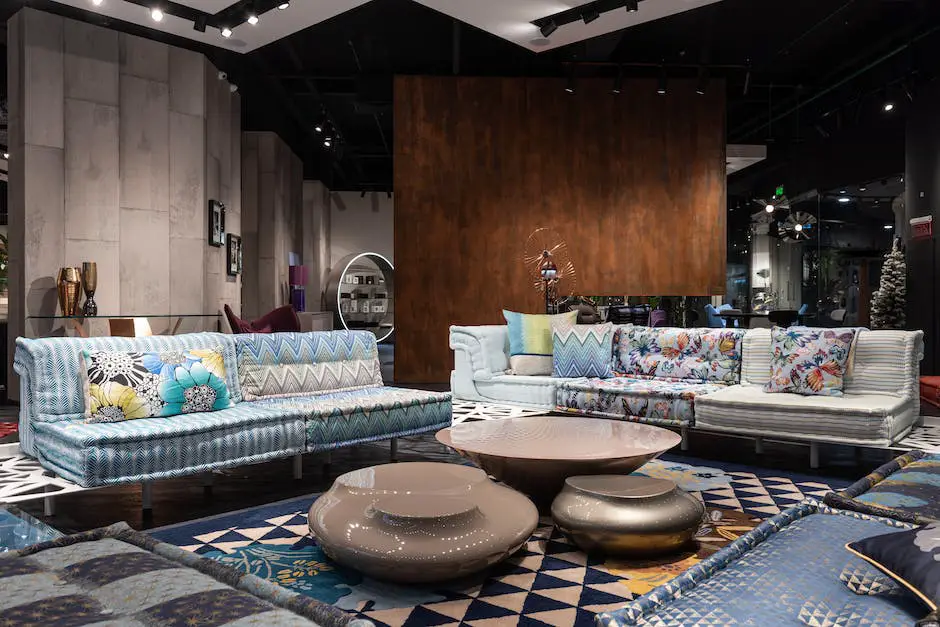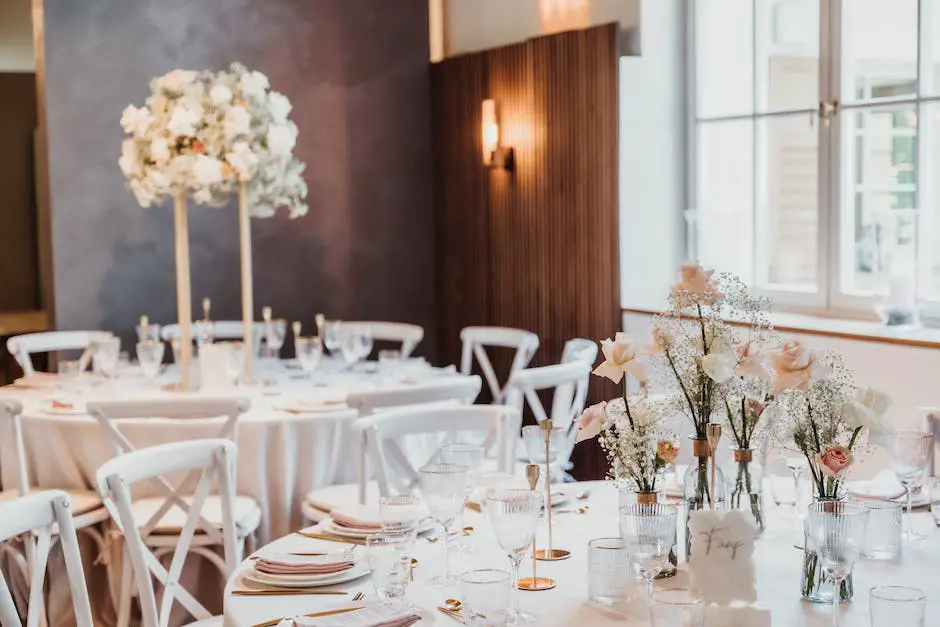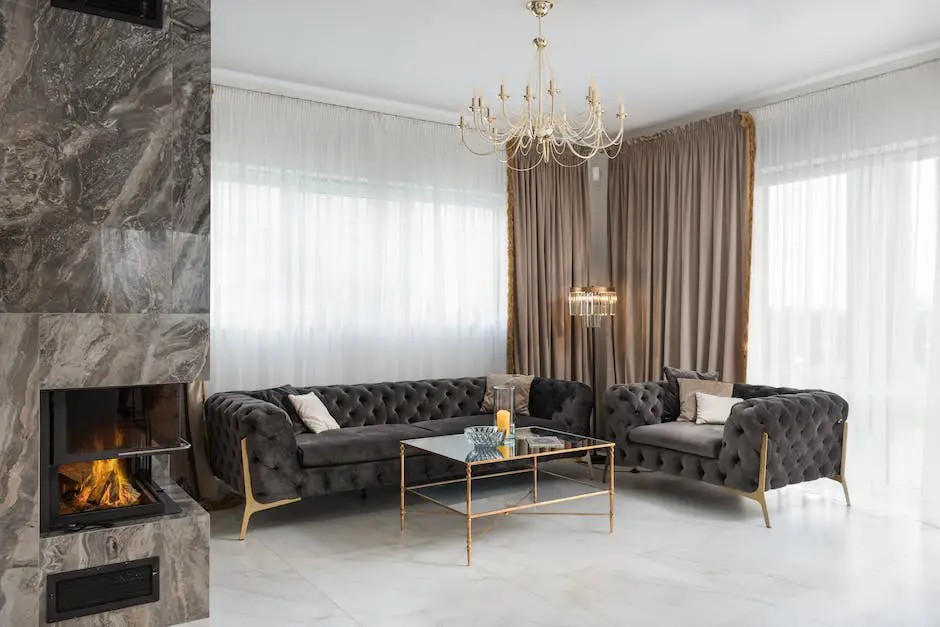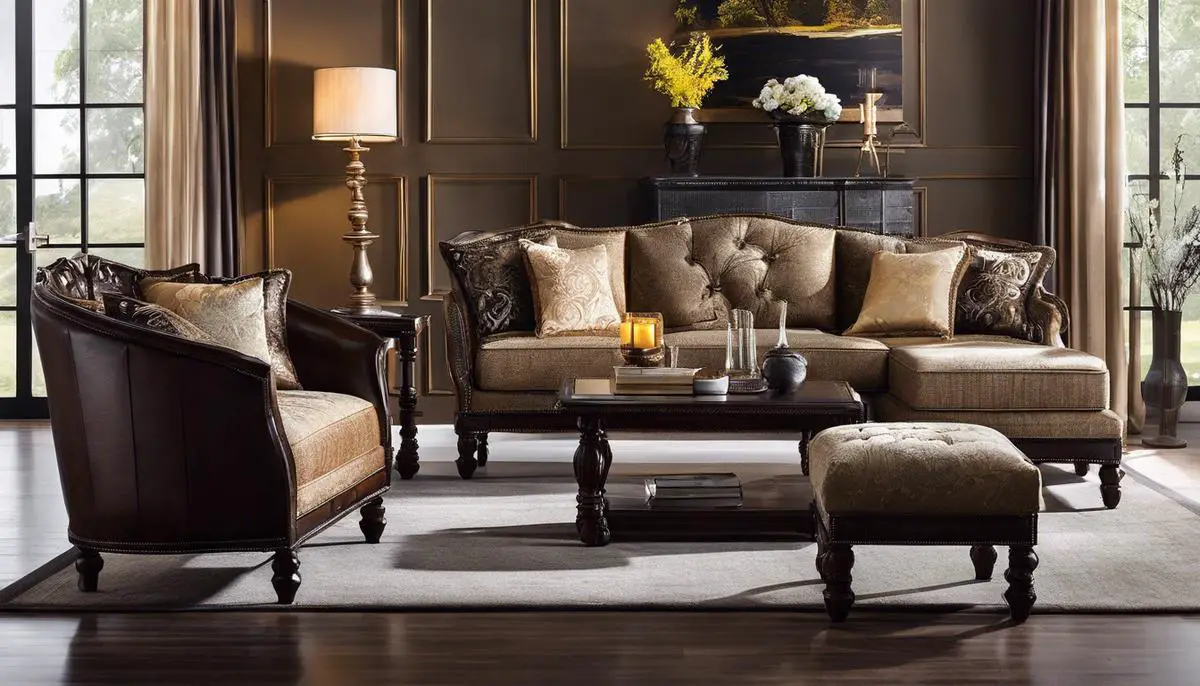In an era where cozy homes and stylish interiors are sought-after, it’s more important than ever to take a comprehensive approach to understanding and planning the cost of furnishing a house. As a potential homeowner or someone looking to revamp your current living situation, it’s crucial that you are informed about the reality of the financial commitment in adding the right touches to a comfortable, aesthetically pleasing home. This exploration delves into everything from current market trends in furniture pricing, to crafting a budget that matches your needs, wants, and financial capability. It further extends to the possibility of capitalizing on savvy cost-saving techniques, and adopting a unique viewpoint of viewing home furnishing as an investment.
Table of Contents
Market research on furniture prices
Navigating the Modern Landscape: Unveiling the Current Market Prices for Household Furniture
In today’s increasingly digital age, the rapidly evolving house furniture market stands as a testament to both innovation and the cyclical nature of consumer trends. Thanks to a market teeming with an exciting blend of both new competitors and well-seasoned industry giants, there’s never been a better time to shop for household furniture. This unique climate is proving that with competition comes change, a phenomenon that is continuously shifting the current market prices for household furniture.
Let’s delve into a simple truth, the cost of furniture largely depends on quality, design, material, brand reputation, and additional factors influencing supply and demand. While there are a range of price points, consumers generally need to prepare to shell out an average of $500 – $1200 for a good quality couch, $800 – $2000 for a dining table set, and $1000 – $5000 for a top-quality bed frame and mattress.
In the realm of patio furniture, it is possible to find items at lower price points. Bargain-seekers can anticipate a range starting at approximately $200 for a simple setup, and escalating to $5000 for premium collections. As always, valuable products with substance command a premium price, reflecting rich design and superior materials that offer consumers both comfort and durability.
It is worth noting there is a rapid surge in direct-to-consumer online furniture brands. Companies like Article, AllModern, and Joybird have revolutionized the selling process by eliminating middlemen, therefore offering high-quality products at significantly fair prices. Buyers can find a good couch for as low as $700 or a bed frame and mattress combo starting from $800 on these platforms.
Furthermore, it’s impossible to ignore the influence of secondhand furniture marketplaces offered through platforms such as Facebook Marketplace and Craigslist. They have given rise to more competitive pricing, with secondhand items in good condition selling for as low as 50% – 80% off their original prices.
The consumer quest for bespoke furniture is also worth noting. Personalized, handcrafted pieces created by artisans may cost anywhere from $2,000 up to tens of thousands of dollars, depending on the complexity of the design and the materials used.
In conclusion, the ever-changing nature of the contemporary furniture market makes it impossible to nail down a single set price for each type of furniture piece. An educated consumer should be closely tuned to these market trends and shifts in consumer behavior. The charisma of the current household furniture industry lies within its intricate balance of demand, quality, craftsmanship, and innovative marketing strategies. Be alert, be informed, and remember, the savviest consumers stay ahead of the curve.

Furnishing budget formulation
Formulating a successful budget for furniture procurement isn’t simply a matter of projecting capital expenditure. It is a high-stakes maneuver that demands strategic acumen, sharp financial planning, and an informed understanding of the interior design landscape. Strategic furnishing budgeting stands at an intersection of various disciplines, fundamentally considering consumer behavior, production costs, retail dynamics, and evolving aesthetic trends.
The first step is to fully integrate the notion of value-for-money. To stay within budget, discern between the trifling and the worth-investing elements of your furniture procurement. High-traffic areas of a house or office warrant investment in high-quality, durable furniture that can withstand constant use. Conversely, accent pieces and decoratives, often less used, might not necessitate as much of a monetary devotion.
Understanding the strength of your purchasing power is crucial. Seasonal sales offer golden opportunities for identifying high-quality furniture at significantly reduced costs. Watch out for annual or bi-annual sales from renowned furniture brands and stores. These would typically occur during transition periods when they are trying to make way for new stock.
Budgeting also sidles on leveraging geography. Procuring furniture overseas, particularly from countries known for their furniture manufacturing industry, can allow you to access pieces of remarkable quality and unique design at more affordable prices. While those places have a lower cost of living, they also house incredibly skilled artisans who craft bespoke furniture pieces, granting your interior a distinct flair without bursting your budget.
Shrewd budgeting is also about playing the long game. Consider adopting a phased approach where furniture purchases are spread over time. This “pay-as-you-go” model ensures that you don’t exceed your budget, and also allows you flexibility as your tastes and trends evolve.
Do not overlook the role of complementary accessories to furniture. Often, a bare-bones, sleek piece can be accentuated with aesthetically pleasing and functional add-ons. Prioritizing these can offer considerable savings, as it spares you from investing in high-end, all-inclusive pieces.
One final dynamic aspect is technology’s role in budgeting. Augmented reality (AR) apps, for instance, offer an interactive platform where you can virtually place the furniture in your home, providing clear strategies for cost-efficient purchases that perfectly balance aesthetics and function.
To achieve a successful result, a blend of disciplined financial practices and maverick creative vision is key to an effective budget formulation for furnishing. Meticulously constructed, executed and refined over time, a furniture budget can transform what often seems like a daunting task into a rewarding experience, and an excellent opportunity for combining efficient budgeting with design innovation.

Prioritization of furniture acquisition
Strategic ways to prioritize furniture acquisition for maximum savings go beyond merely understanding market dynamics and cost factors. It’s about a calculated approach, understanding the value of money, identifying opportunities, and making informed decisions. Remarkable savings occur when one embraces not just financial prudence but also creative vision in the furnishing budget formulation. Let’s delve deeper into each of these components.
Understanding Value for Money
Value-for-money in furniture procurement is not merely about seeking the lowest price; it’s about making the most of every dollar spent. This involves considering the furniture’s lifespan, functionality, and maintenance cost over simply focusing on the upfront cost. Hence, buyer decision-making should account for how well the furniture can serve the desired purpose and its durability.
Identifying Opportunities in Sales
Maximizing savings involves strategically timing purchases around seasonal sales or discounts offered by renowned furniture brands. This not only extends the purchasing power but also opens the door to quality furniture which might have otherwise been out of budget reach.
Overseas Furniture Procurement
Another frontier worth exploring is the procurement of furniture from overseas, particularly from countries recognized for their furniture manufacturing prowess. Furniture imported directly from these countries can lead to significant savings without compromising on quality or style.
Adopting a Phased Approach
Staying within budget often necessitates a phased approach to furniture purchase where priority is given to essential items, followed by others over time. This allows for a more balanced cash-flow and avoids the trap of overspending.
Complementary Accessories
Complementary furniture accessories can notably enhance aesthetics and functionality without requiring large expenditures. An adept combination of diverse, budget-friendly accessories can revolutionize the appearance and utility of even basic furniture pieces.
Utilizing Technology
Modern tools like augmented reality apps enable customers to virtually visualize furniture in their space before making a purchase decision. This limits the chances of costly mistakes and unsuccessful purchases, thus boosting cost efficiency.
In summary, a strategic approach to furniture acquisition for maximal savings is a blend of understanding and balancing the financial practices with a creative vision that caters to utility, style, and affordability. This approach ensures that pieces purchased contribute to creating a space that’s not just aesthetically pleasing, but also functional and within budgetary constraints. Remember, purchasing furniture should be a careful and calculated investment, not a drain on resources.

Innovative cost-saving strategies
Innovation and strategy go hand in hand when it comes to cost-efficiently furnishing a home.
The mention of a strategic, phased approach to furniture purchasing illustrates the idea of planning each acquisition based on prioritized needs. This disciplined tactic prevents impulsive buys and helps retain focus on items that are significantly necessary.
Eager to accentuate the charm and functionality of your household furniture? Consider the underrated, cost-effective power of complementary accessories. Throw pillows, rugs, lighting, art pieces, these embellishments, while appearing minor, do wonders in enhancing the aesthetics and functionality of furniture without requiring a substantial financial commitment.
Harness the prowess of modern technology and bring forth innovation in your furniture procurement process. Capitalize on augmented reality applications to visualize furniture in your space before making the final purchase. These applications offer a realistic, immersive experience of how a furniture piece would harmonize with your existing décor, thereby contributing to informed, cost-efficient purchases.
Venturing into overseas procurement? Countries known for their prevailing manufacturing industries, such as China, Vietnam, and India, often offer lower-priced options. However, careful consideration of shipping charges, import duties, and quality standards should precede any decision.
Capitalizing on sales and discounts offered by renowned furniture brands is another sharp strategy. Keep a keen eye on seasonal sales, clearance offerings, and promotional discounts. These provide the opportunity to obtain high-quality pieces at a fraction of the original cost.
Yet, while all these strategies invariably lead to cost savings, one must comprehend the concept of value-for-money. The cheapest option is not necessarily always the best. Assess the durability, design, and everyday usability of furniture, comparing them to the price point. Seek to strike a balance between affordability and longevity.
To tie it all together: strategize, innovate, and embrace technology, evoking a blend of disciplined financial practices with a dynamic, creative vision. In doing it so, watch as your dream home comes to life without straining your budget.

Investment aspect of home furnishing
In an era of smart investments and strategic maneuvers, discerning homeowners are reimagining the art and science of home furnishing. Upon closer inspection, the most strategic of all reveal that they understand furnishing a home has evolved from a task on their to-do list to a well-planned, insightful investment that brings more value than cost to their living space.
Through innovative and flexible financing models, home furnishing has become an investment strategy that focuses both on immediate needs and long-term financial planning. Not a random, unplanned expenditure on luxury and comfort, but a calculated tactic to enhance the value of your asset – your home.
Add to this the power of innovation in the realm of house furnishing. From space-saving furniture for small-space living to smart complementary accessories, the industry’s stalwarts are crafting designs and solutions to magnify both functionality and aesthetic appeal. The concept of embracing minimalism and functionality to ensure the costs of possessions are not exceeding their value is a trend that’s not only assuming a stronghold but also showing its monetary benefits over time.
The furniture industry, like many others, knows its way around the digital world in increasing opportunities for the modern consumer. From virtual reality applications enabling homeowners to visualize furniture in their homes before purchase, establishing a balance between aesthetics, space, and budget, to AI-enabled shopping assistants providing personalized shopping experiences, the furniture industry is no stranger to technology.
Leveraging these technological advancements to find the right balance between total cost of ownership and the expected returns in term of functionality, aesthetics, and comfort may sound like walking a financial tightrope, but with the right mindset, it can become a norm for many homeowners.
The effect of well-planned home furnishing extends beyond the boundaries of our homes. From a global perspective, this investment can contribute to sustainability. Furniture overseas procurement from manufacturer powerhouses contributes to better pricing and more diverse product options. It’s a smart game of global sourcing benefiting consumers, manufacturers, and even contributing to the global economic equilibrium.
However, these opportunities require a mindset shift from seeing home furniture as just another item of expense to viewing it as an investment. An investment that can, over time, yield substantial returns, not only financially but also emotionally and psychologically. Transforming your house into a ‘home’ that echoes your personality and taste, offering comfort, convenience, and even prestige.
At its heart, seeing home furnishing as a potential investment signals a more mindful and financially savvy consumption model. It prompts the homeowner to source wisely, spend thoughtfully, and prioritize quality and longevity over instant gratification.
Indeed, the transformation of home furnishing into a noteworthy investment is evidence of the evolving relationship between homeowners and their residences. With the right strategies and mindset, home furnishing can evolve from being a mere expenditure to a necessary, worthwhile, and gratifying investment. The contemporary homeowner is not just decorating a home but orchestrating a lifestyle while simultaneously creating a sound financial strategy. They are visioning a space that is practical, profitable, visually pleasing, and above all, a real reflection of their personal taste and style.
Ultimately, this perspective is more than a fresh direction for homeowners, it represents a significant shift in the way we approach investing, consuming, and living. As the globe continues to expand and innovate, it’s clear that the home furnishing industry is more forward-moving than ever, with increasingly savvy consumers driving these changes. So, the question isn’t, “how much will it cost to furnish my house?” it’s “how much value can I add to my house through strategic furnishing decisions?” And as more homeowners embrace this mindset, it will shape the future of the home furnishing industry, home ownership, and even the global economy.

With a strategic budget, well-thought-out purchase priorities, cost-saving hacks, and a keen eye for investment opportunities, turning a house into a home doesn’t have to be an overwhelming financial exertion. Instead, with the right approach, it can be an intricate blend of smart financial decisions and creative choices that result in a home that reflects your taste, aligns with your lifestyle, while also acting as a commendable financial asset. Through this comprehensive study, you’re not simply advised to spend; you’re equipped with an in-depth understanding of efficient spending. Thus, you now stand equipped with knowledge, empowered to redefine your domestic horizon by striking the perfect balance between comfort, style, and fiscal wisdom.

After sitting in a back breaking office chair for hours every day at his job, William Burch got the idea to start the Recliners Hunt website. William is focused on ergonomic chair design – as it is more important than ever today since we are spending more and more time sitting at our computers.


